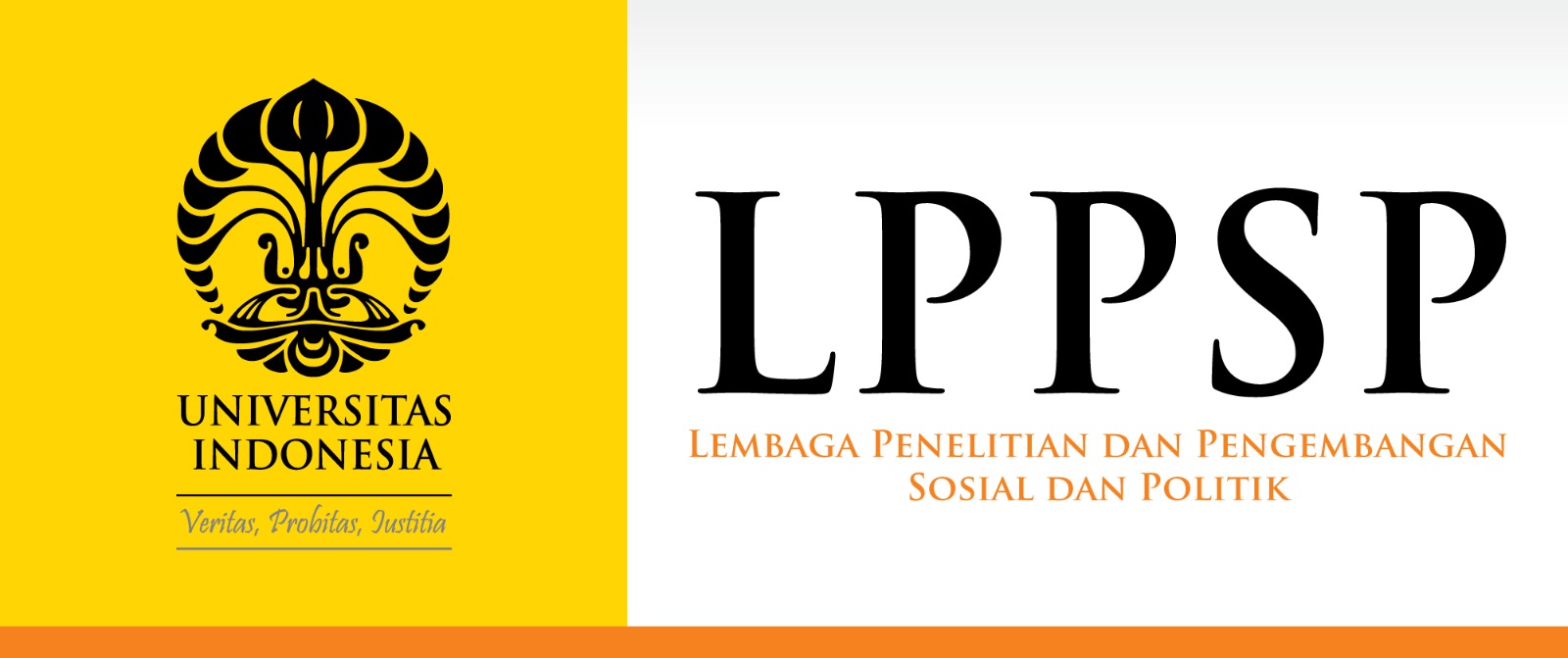JURNAL KOMUNIKASI INDONESIA
Abstract
This article is intended to understand how single mother bloggers construct the single mother blogger constructs the acceptance of negative labels given by society. The negative label was inherent in women who held the status of single mother. This study was compiled based on the results of in-depth interviews conducted by researchers on the single mother bloggers and supported by a review of the blog contents written by the single mother bloggers. The research method used in this journal is hollistic single case study design with constructivism paradigm. Social interactions between the single mothers and their surrounding environment or a supporting system is emphasized in this study. An internal factor of the single mothers’ intrapersonal communication and external factor of interpersonal communication between the single mothers and supporting system, such as family, community, close friends or even people in the digital world who give positive comments, has a self-healing mechanism. The single mother bloggers used this to shape a new reality on the single mother label.
References
Antunovic, D.& Hardin, M. (2013). Women Bloggers: Identity and the Conceptualization of Sports. New media & society, 15(8), 1374–1392.
Becker, H. S. (1963). Outsiders: Studies in the Sociology of Deviance. New York: Free Press.
Berger, P & Luckman, T. (1966). The Social Construction of Reality. New York: Penguin Group.
Cahyaningsih, A. (2018). Daya Juang Wanita Single Parent yang Mengalami Perceraian dalam Memenuhi Kebutuhan Hidup. Bussiness and Management (IOSR-JBM), 19 (1), 51.
Dariyo, A. (2004). Psikologi Perkembangan Dewasa Muda. Jakarta: Grasindo.
Eckert, S. (2018). Fighting for Recognition: Online Abuse of Women Bloggers in Germany, Switzerland, the United Kingdom, and the United States. New Media & Society, 20(4), 1282–1302.
Fowler, B. (2010). Reading Pierre Bourdieu’s Masculine Domination: Notes Towards An Intersectional Analysis of Gender, Culture, and Class. Cultural Studies, 17: 3-4, 468-494.
Frizzo, H., et al. (2017). Grieving Mothers: Design of Thematic Blogs about Loss of a Child. Acta Paul Enferm, Vol 30(2):116-21.
García, M. R. (2015). Reality Construction, Communication and Daily Life-An Approach to Thomas Lukmann Work. Intercom: Revista Brasileira de Ciências da Comunicação, 38(2), 19-38.
Goffman, E. (1963). Stigma: Notes on the Management of a Spoiled Identity. Englewood Cliffs, NJ: Prentice Hall.
Hakiki, G., & Supriyanto, S. (2018). Profil Perempuan Indonesia 2018. In N. Sahrizal, P. S. Handayani, I. Sahara, A. Chamami, T. R. B. Rahayu, I. Lukitasari, & A. Pambudi Raharjo (eds). Jakarta: Kementerian Pemberdayaan Perempuan dan Perlindungan Anak.
Haryatmoko. (2010). Dominasi Penuh Muslihat, Akar Kekerasan dan Diskriminasi. Jakarta: Gramedia Pustaka Utama.
Hasanah, T. D. U., & Widuri, E. L. (2014). Regulasi Emosi pada Ibu Single Parent. Jurnal Psikologi Integratif, 2, 86-92.
Kashima, Y. (2014). Meaning, Grounding, and the Construction of Social Reality. Asian Journal of Social Psychology, 17(2), 81–95.
Kim, J. H. (2016). Understanding Narrative Inquiry. Thousand Oaks, CA: Sage Publications.
Lemert, E. (1967). Human Deviance, Social Problems and Social Control. Englewood Cliffs, NJ: Prentice-Hall.
Link, B. G, & Phelan, J. C. (2001). Conceptualizing Stigma. Annual Review of Sociology, 27, 363-385.
Littlejohn, S. W., & Foss, K. A. (2009). Encyclopedia of Communication Theory. Thousnad Oaks, CA: Sage Publications.
Long, P., & Tim Wall. (2013). Media Sstudies: Texts, Production, Context. London: Routledge.
Luckmann, T. (2008). On Social Interaction and the Communicative Construction of Personal Identity, Knowledge and Reality. Organization Studies, 29(2), 277–290.
Manosevitch, I. & Yonit, T. (2017). Blogging, Craft Culture, and Women Empowerment. Cogent Social Science Media and Communication Studies, 3.
McConnell-Ginet, S. (2008). “What’s in a Name?” Social Labelling and Gender Practices. In HolmesJ & Meyerhoff, M. (eds). The Handbook of Language and Gender (pp. 69-97). London: Blackwell.
Mies, M. (1986). Patriarchy and Accumulation on a World Scale: Women in the International Division of Labour. Avon: The Bath Press.
Parker, L., Riyani, I & Nolan, B. (2016). The Stigmatisation of Widows and Divorcees (Janda) in Indonesia, and the Possibilities for Agency. Indonesia and the Malay World, 44:128, 27-46.
Robles, J. (2012). A Discourse Analysis of “Social Construction” in Communication Scholarship. The Electronic Journal of Communication, 22(3&4).
Scheff, T. H. (1966). Becoming mentally ill. Chicago: Aldine.
Sirait, N., & Minauli, I. (2015). Hardiness pada Single Mother. Jurnal Diversita, 29 (1).
Smith, R. A. (2007). Language of the lost: An explication of stigma communication. Communication Theory, 17(4), 462-485.
Suryanti, S. (2016). Hubungan antara Dimensi Advestity Quotient dengan Kepuasan Kerja pada Wirausaha Wanita: Studi Kasus pada Wirausaha Fashion dan Kuliner di Kota Samarinda. Jurnal Manajemen, 8, 136-151.
Wajcman, Ju. (2004). Technofeminism. Cambridge: Polity Press.
Wajcman J.(2008). Technology as a Site of Feminist Politics. In Lucht, P & Paulitz, T (eds) Recodierungen des Wissens: Stand und Perspektiven der Geschlechterforschung in Naturwissenschaften und Technik [Recoding Knowledge: State and Perspectives of Research on Gender in the Natural Sciences and Technology] (pp. 87-101). Frankfurt: Campus Verlag.
Yin, R. K. (2014). Case Study Research: Design and Method. Fifth Edition. Thousand Oaks, CA: Sage Publications.
Zajacoval, A. (2002). Constructing the Reality of the Immigrant Life. Journal of Social Distress and the Homeless, 11(1), 69-79.
Recommended Citation
Fatimah, Anggun Nadia; Nirmalasari, Andi; Puspitaningrum, Deby; Erawaty, Dyah Permana; and Lumeta, Putri Neva
(2019)
"Construction of Single mother Blogger towards Attached Negative Label,"
JURNAL KOMUNIKASI INDONESIA: Vol. 8:
No.
2, Article 6.
DOI: 10.7454/jki.v8i2.10988
Available at:
https://scholarhub.ui.ac.id/jkmi/vol8/iss2/6
Included in
Gender, Race, Sexuality, and Ethnicity in Communication Commons, International and Intercultural Communication Commons, Social Influence and Political Communication Commons




